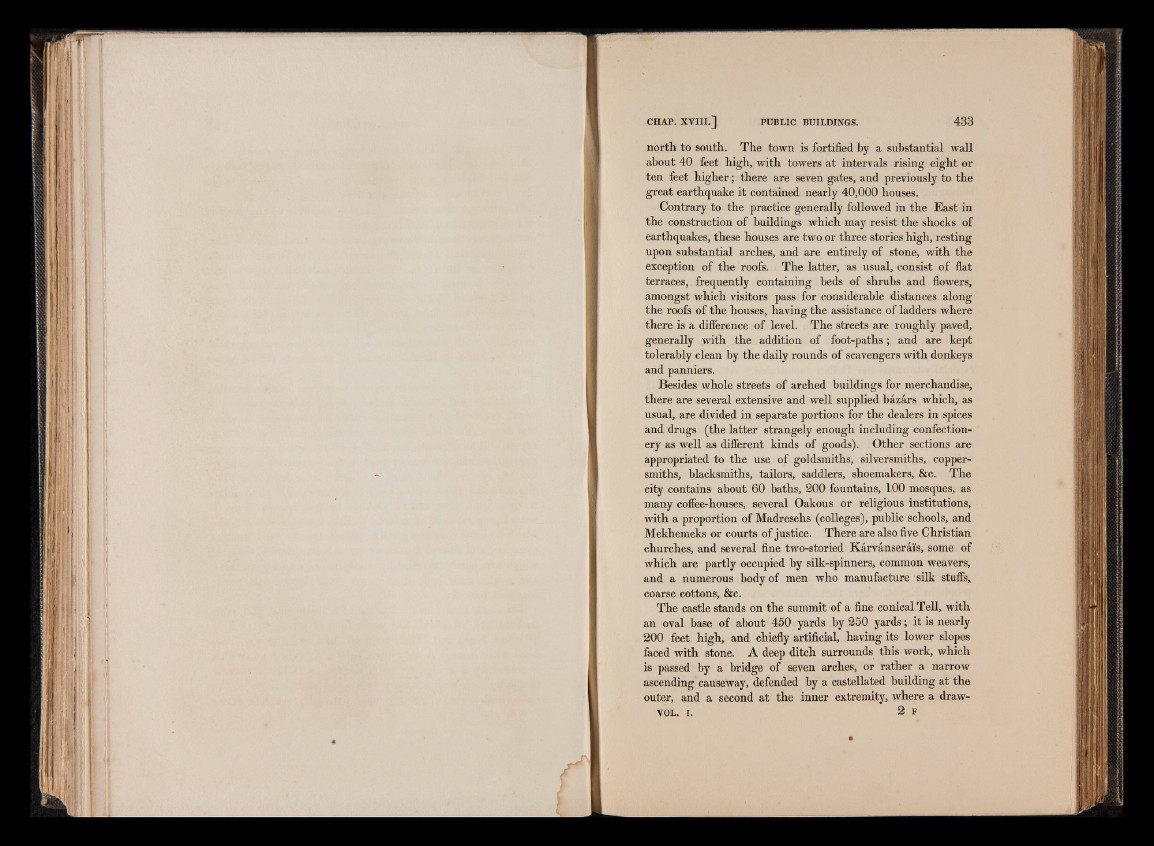
I
I
f
north to south. The town is fortified by a substantial wall
about 40 feet high,, with towers at intervals rising eight or
ten feet higher; there are seven gates, and previously to the
great earthquake it contained nearly 40,000 houses.
Contrary to the practice generally followed in the East in
the construction of buildings which may resist the shocks of
earthquakes, these houses are two or three stories high, resting
upon substantial arches, and are entirely of stone, with the
exception of the roofs. The latter, as usual, consist of flat
terraces, frequently containing beds of shrubs and flowers,
amongst which visitors pass for considerable distances along
the roofs of the houses, having the assistance of ladders where
there is a difference of level. The streets are roughly paved,
generally with the addition of foot-paths; and , are kept
tolerably clean by the daily rounds of scavengers with donkeys
and panniers.
Besides whole streets of arched buildings for merchandise,
there are several extensive and well supplied bazars which, as
usual, are divided in separate portions for the dealers in spices
and drugs (the latter strangely enough including confectionery
as well as different kinds of goods). Other sections are
appropriated to the use of goldsmiths, silversmiths, coppersmiths,
blacksmiths, tailors, saddlers, shoemakers, &c. The
city, contains about 60 baths, 200 fountains, 100 mosques, as
many coffee-houses, several Oakous or religious institutions,
with a proportion of Madresehs (colleges), public schools, and
Mekhemeks or courts of justice. There axe also five Christian
churches, and several fine two-storied Karvanserai's, some of
which are partly occupied by silk-spinners, common weavers,
and a numerous body of men who manufacture silk stuffs,
coarse cottons, &c.
The castle stands on the summit of a fine conical Tell, with
an oval base of about 450 yards by 250 yards; it is nearly
200 feet high, and chiefly artificial,. having its lower slopes
faced with stone. A deep ditch surrounds this work, which
is passed by a bridge of seven arches, or rather a narrow
ascending causeway, defended by a castellated building at the
outer, and a second at the inner extremity, where a drawv
o l . i. 2 f